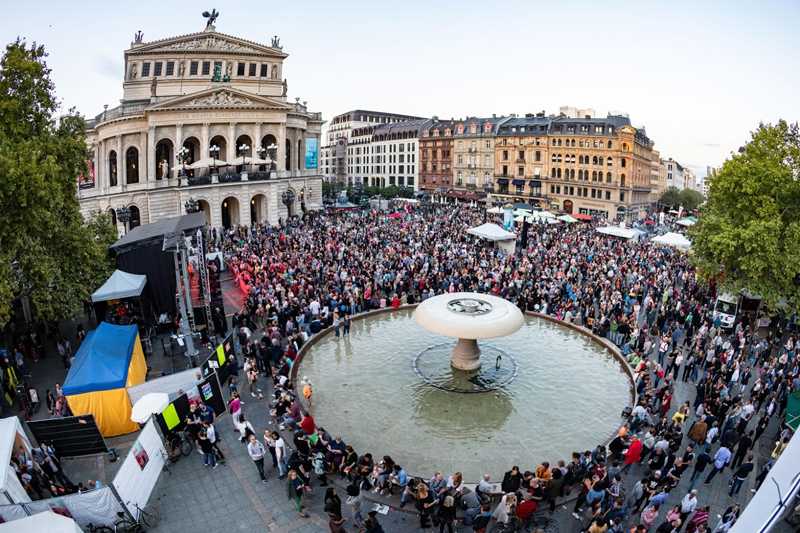Rock gegen Rechts powered by Linea Research
- Details

Thirty-nine years later, Rock gegen Rechts was once again heard in downtown Frankfurt, in a one-day festival staged in the city’s famed Opernplatz. The audience enjoyed the advances in live sound since the 1970s as they listened to the day’s music and messages delivered with power and clarity by Linea Research amplifiers.
Nearly 90 organisations were involved in the event. Its patrons included vice presidents of the Bundestag Claudia Roth and Petra Pau, Lord Mayor of Frankfurt Peter Feldmann, and other city officials. Thirteen musical groups squeezed into the 10-hour show. Between the music performances various organisations and sponsors of the event delivered speeches and video messages with statements against racism and exclusion and in favour of peace, human rights, and diversity.
“The festival used culture as an ambassador of political content,” says Jörg Groh of Offenbach-based sound company Audiologic, who provided sound reinforcement for the show.
The show’s promoters were not certain how many people to expect but the crowd gradually grew until the square was packed with 10,000 attendees. The stage was a trailer platform 10m (32.8ft) wide, with wings on either side for the sound system and a covered extension to hold Monitor World. The festival also managed to fit in a 15 square meter (17.9 square yard) LED wall and conventional and moving lights, along with the main sound system, delay stacks, monitors, front-of-house station, power, and toilets - all in all, a lot to pack into an urban plaza.
The speaker system consisted mostly of SLS ribbon line array loudspeakers, with low-frequency coverage from TW Audio and JBL speakers. “The decision to use Linea power amplifiers came after consulting our suppliers, Mathias Ziegenberg of Pro Audio Technik and Jens Seekamp from Audio Concepts,” Groh reports, “They convinced us of the advantages of the Linea amps, such as their performance, Linea’s DSP platform, the access via Ethernet, and access to pre-sets and key parameters via the user interface.”
A pair of four-channel, high-powered Linea 44M20 amplifiers was sufficient to power the main system.
Eight recently acquired Seeburg Acoustic Line X8 slant monitors were deployed across the stage. “When considering amplification for our new monitor system, we opted for the Linea Research 88C10 8-channel amplifier,” reveals Groh. “We get a lot of power in eight channels, fit into only two rack units.” The 88C10’s Class D amplification can develop up to 1,250 watts RMS per channel.
(Jim Evans)
















